Contemporary works
KURSAAL
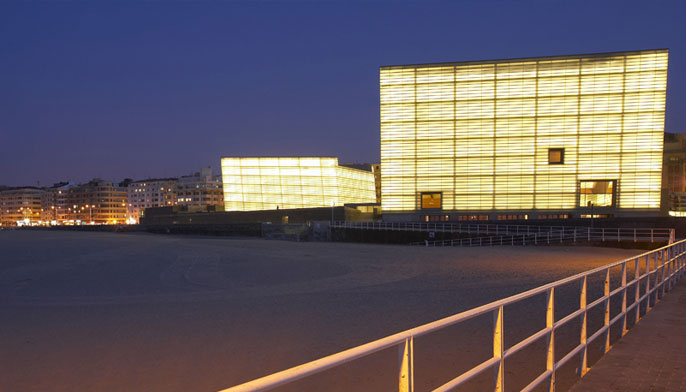 Kursaal cubes lit up at night
Kursaal cubes lit up at night
Audioguide
KURSAAL
The architect Rafael Moneo designed the translucent glass cubes to resemble “two beached rocks” with the aim of “perpetuating the geography and, as far as possible, emphasizing the harmony between the natural and the artificial". The building holds the Contemporary Architecture Mies van der Rohe Award, the most important in Europe, for “the exceptional character” of the project and its “conceptual, aesthetic, technical and constructive innovation.”
It is one of the great expressions of contemporary architecture, an artwork and distinguishing feature of San Sebastián ever since it was built, a congress centre and venue for festivals and fairs of all kinds.
The Kursaal is the result of an ambitious project thanks to which San Sebastián and Gipuzkoa now have a modern, innovative infrastructure for holding congresses and cultural activities.
BASQUE CULINARY CENTER
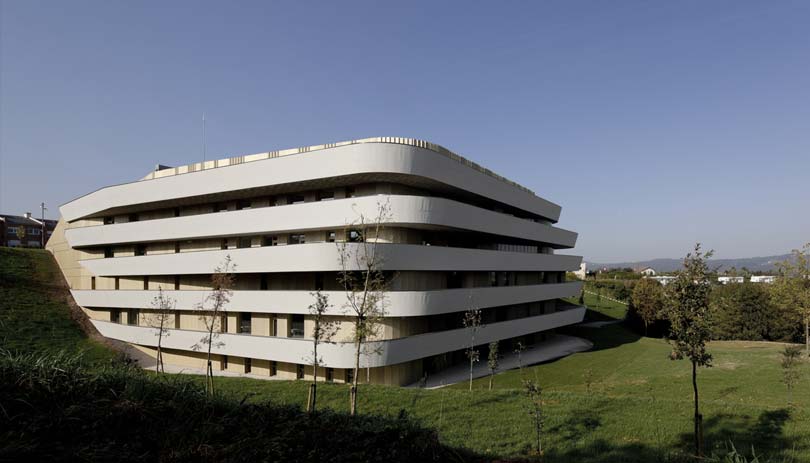 The Basque Culinary Center building looks like a stack of plates
The Basque Culinary Center building looks like a stack of plates
The Basque Culinary Center building, completed in 2011, stands on a hill in the Miramón Technology Park. Designed by the VAUMM studio, the building organically integrates with its surroundings, making the most of the hill slope to organise the interior space from top (access, restaurant, etc.) to bottom (classrooms and laboratories).
If you approach the building from the north-east, you will see that its terraces are designed to look like plates piled one on top of the other, popularly known as “salad bowls”.
MUSIKENE
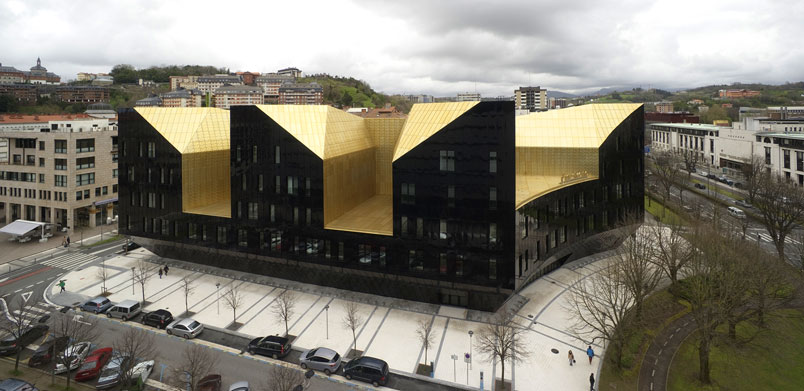 Musikene-proyecto
Musikene-proyecto
The Higher School of Music of the Basque Country, Musikene housed in the district of Benta Berri. It is a centre specially designed for the higher teaching of music and which, in addition to classrooms, offices and the Mediatheque, house an auditorium.
The team of GAZ architects defines the building as a volume which expands to occupy the entire site. It is a black lacquered volume in a nod to the colour of a grand piano, with carved openings allowing light to flow into its spaces. From the top of the building, golden colour rises upwards in contrast to the black, thereby lending the construction its personality.
IESU CHURCH
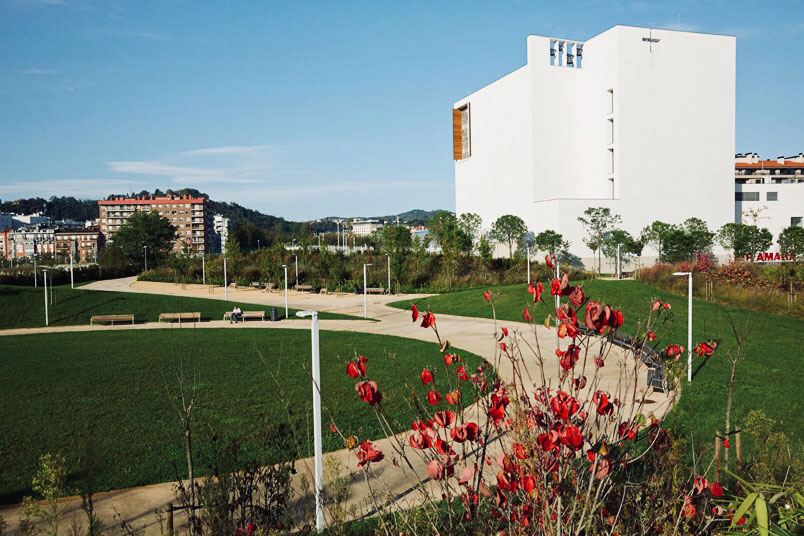 The Iesu parish seen from the Memorial Garden
The Iesu parish seen from the Memorial Garden
The architect Rafael Moneo, considered to be one of the most outstanding representatives of contemporary Spanish architecture, was chosen by the ecclesiastic bodies to design the church for the new district of Riberas de Loiola created in San Sebastián between the already existing neighbourhoods of Amara and Loiola. Alongside the parish church a Memory Park has been built, a space to keep alive the memory of all victims of violence, terrorism and war.
SAN TELMO MUSEOA
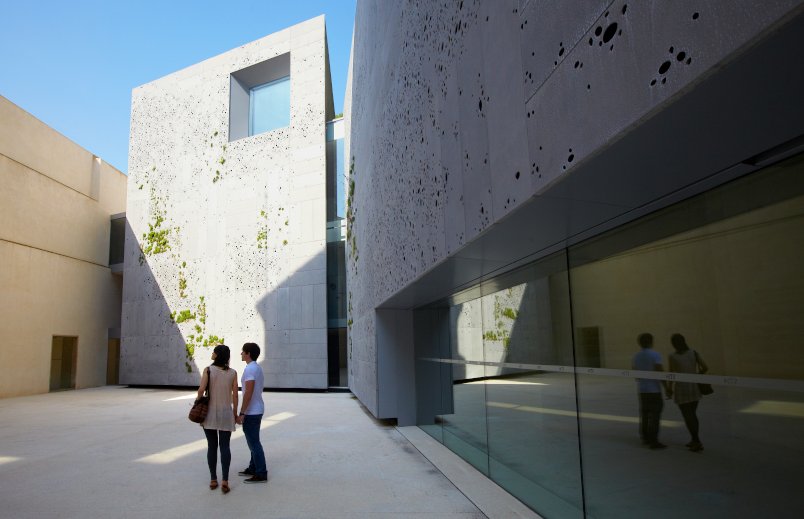
Located at the heart of the Old Town, the museum has reopened its doors after major renovations made by Nieto Sobejano Architects. They renovated the 16th century Dominican convent and extended with a contemporary building. One of the unique elements of the new building is the aluminium facade covering the entire building. As a result of joint work between the team of architects and the artists Leopoldo Ferrán and Agustina Otero, the building has been given the capacity to blend in with its environment, Mount Urgull, as the perforated sheets let the vegetation pass through so that it can overhang like it does on the mountain's worn stone, inspiring the artists' work.
JUNTAS GENERALES DE GIPUZKOA
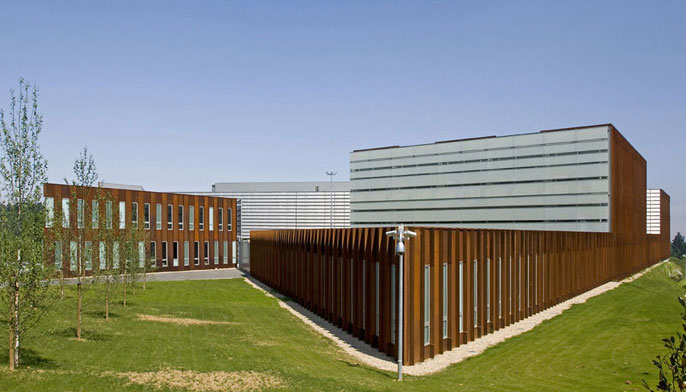 Gipuzkoa Generator Council building
Gipuzkoa Generator Council building
Located in San Sebastián’s Miramón Technology Park, the building (a 3-storey cube occupying a total of 3,600 m2) forms part of a built-up space alongside other Provincial Government bodies.
The construction is based on a continuous exterior skin of alternating 'blind’ strips of corten steel and glass pieces, transparent or frosted, depending on the area. It runs round the building as a single cladding to combine, in the interior square, with another two facade walls in alabaster: one on the General Assemblies building, and another on the front facade providing the backdrop for the Plenary Hall. Alongside these are glass walls that open out onto the interior garden-patio and onto a central public square visible from all of the working areas around it. These areas are protected by double glass facades and metal latticework, giving each interior space an open and democratic feeling.